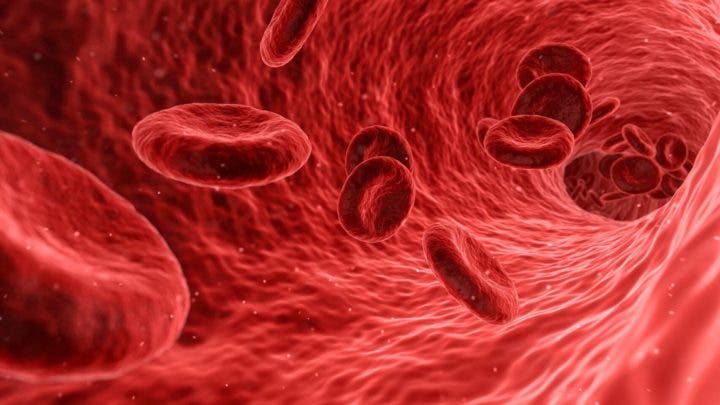It is known that there are at least 80,000 people affected by familial hypercholesterolemia, a genetic disorder that prevents the body from properly processing lipoproteins and cholesterol. This causes in the patient that both substances accumulate in the arteries, and, consequently, increases the risks of suffering cardiovascular diseases and events.
If you are an athlete, the situation is complicated, since cholesterol is needed to, among other functions, build muscle. Therefore, given the delicate balance between adequate, excessive and necessary levels of cholesterol, we are going to delve into what family hypercholesterolemia consists of , and what diet and training is appropriate so that it does not imply a limit in our life.
What is familial hypercholesterolemia
Familial hypercholesterolemia (FH) is an inherited disease that is transmitted due to a dominant gene, which causes a mutation in the gene responsible for receiving and processing low-density lipoproteins LDL, erroneously known as bad cholesterol.
The presence of this gene causes the individual's body to not adequately process lipoproteins and cholesterol in the blood, thus increasing their presence and, consequently, increasing the risks of suffering from strokes, angina pectoris or heart attacks, among other episodes.

How Familial Hypercholesterolemia Is Diagnosed
Surely you are wondering how to know if you can be one of those 80,000 people who would test positive for the HF. Today, the only effective diagnostic method for familial hypercholesterolemia is a blood test that shows cholesterol and triglyceride levels.
The values and symptoms that warn that it may be a case of FH coincide with the concurrence of blood cholesterol values above 300 mg / dL continuously over time, triglyceride values above the average for their age and physical condition, and, in addition, there must be a family history of coronary heart disease or cardiovascular events before reaching the age of 50.
The chances of being a carrier of familial hypercholesterolemia increase if one or two of your parents have been diagnosed with this disease. However, just because a person has this defective gene does not mean that all their offspring inherit the genetic disorder. According to the latest studies, only 50% of the offspring would develop this gene.

Physical signs to detect genetic hypercholesterolemia
Along with these internal symptoms, externally there are also warnings that alert us to the need to go to the family doctor.
First, tendon xanthomas may appear, which is a condition that causes the Achilles tendons and the extensors of the knuckles to accumulate fat (cholesterol). These types of fat bumps can also appear on the elbows and buttocks, and are known as tuberculous xanthomas .
If you feel identified with any of these scenarios, and you notice that your eye has a permanent red ring around the contour, go to the family doctor to request an analysis, since it may be a xanthelasma . In any case, it is advisable, if there is a history, to carry out a regular control of lipid levels , and, of course, to lead a healthy life.

Implications of Familial Hypercholesterolemia
The research and scientific proposals that have been developed so far have confirmed that familial hypercholesterolemia is directly related to an increased risk of cardiovascular disease.
According to the Foundation for the Study of HF, 50% of women who, having the gene and developing the disease have not been diagnosed, s ufrirán before age 65 an event of heart failure or circulation. In the case of men, the percentage increases to 85% of the undiagnosed.

Familial hypercholesterolemia in athletes
Cholesterol in excess is harmful to the health of the person; However, for athletes, good fats are very necessary to guarantee energy during exercise and not consume energy from the muscles. In fact, some essential fatty acids, such as omega-3, neutralize inflammation and help in the recovery of exercised muscle tissues.
Now, you have to take special care not so much the quantity, but the proportion and quality of the ingested fats. Otherwise, the increase in bad cholesterol in the blood drastically reduces the work capacity of your physique, since the fatty plaques in the coronary, cerebral, femoral, iliac and aortic arteries) provide rigidity and less responsiveness to the needs of the activated organism of the athlete.
As a consequence of this, a narrowing of the pathways is recorded, which reduces blood flow, directly related to episodes of ischemic heart disease, cardiovascular accidents, aneurysms and peripheral vascular diseases.
It is not strange, either, that thrombogenetic lesions associated with FH are generated. These types of complications as a result of familial hypercholesterolemia in high-performance athletes are especially dangerous in athletics (and especially in long-distance and mid-distance races), cycling, or swimming.

How to control genetic hypercholesterolemia
There are 2 types of treatments to control familial hypercholesterolemia: on the one hand, at the pharmacological level; on the other, a healthy lifestyle and a balanced diet.
1. Treatment of HF
Pharmacological treatment to neutralize increases in cholesterol and triglycerides is based on a series of pills and medications, among which are statins – until now, the drug with the best results in terms of cholesterol control and reduction. This medicine prevents the liver, without proper internal function, from inhibiting the production of cholesterol.
Other drugs, such as ezetimibe and bile acid sequestering resins , are also prescribed to prevent the small intestine from absorbing cholesterol. For their part, fibrates act directly on triglycerides to normalize their levels.

2. Non-pharmacological treatment of HF
Beyond drugs, to minimize the presence of the disease on a daily basis, an adequate and fair diet is recommended to help reduce the presence of saturated fat, cholesterol, and fluids. This reduction has as a direct consequence a decrease in blood pressure, one of the main triggers of cardiovascular problems. Hence, doctors and nutritionists insist on the need to avoid foods that raise their levels (salts, caffeine, etc.).
The dietary treatment of genetic familial hypercholesterolemia insists on the need to consume monounsaturated vegetable fats, such as olive oil or soy, which prevents atherosclerosis and the risks of suffering a thrombus or blood clot in the veins or arteries.
Plant sterols , meanwhile, help reduce cholesterol: they act in the intestine, preventing it from absorbing harmful cholesterol. In addition to fruits and vegetables, you can find them in dairy (yogurt, cheese, etc.).

Tobacco and alcohol with Familial Hypercholesterolemia
Smoking raises the heart rate, an increase that leads to higher blood pressure. If this occurs in a person without HF, in those who, in addition, tend to accumulate cholesterol in the arteries and veins, the effect and the risks multiply. Therefore, when faced with a diagnosis of hypercholesterolemia, specialists always recommend stopping smoking.
A similar effect causes the consumption of alcohol in large quantities and / or continuously, to which are added the problems that alcohol can cause in the liver, such as cirrhosis.

Consequences of genetic familial hypercholesterolemia
The first alarm signals are emitted by the heart in the form of angina pectoris. In athletes in whom cholesterol has clogged the arteries, with consequent loss of blood flow to and from the heart, severe heart attacks or arrhythmias have been reported. In addition, in any of the cardiovascular conditions, recovery is slow, and in many cases, incomplete .
With more serious character, the obstruction of the main arteries of the body can lead to cerebral infarcts, since the blood does not reach the brain, and it needs it to function properly. This type of event, if not treated in time, can be fatal for those who suffer it.

How to train correctly with Familial Hypercholesterolemia
To aid in cholesterol control, moderate intensity aerobic exercise is recommended. While it is true that it has been studied how HIIT (High Intensity Interval Training) workouts improve results; the concurrence of medication, diet, activity and genetics means that the results are not definitive, and, therefore, taken as a reference. The recommended time per session is 40 minutes.
Along with moderate aerobic exercises, specialists recommend planning and performing resistance strength training routines, in which several muscle groups are worked by executing several short sets.
